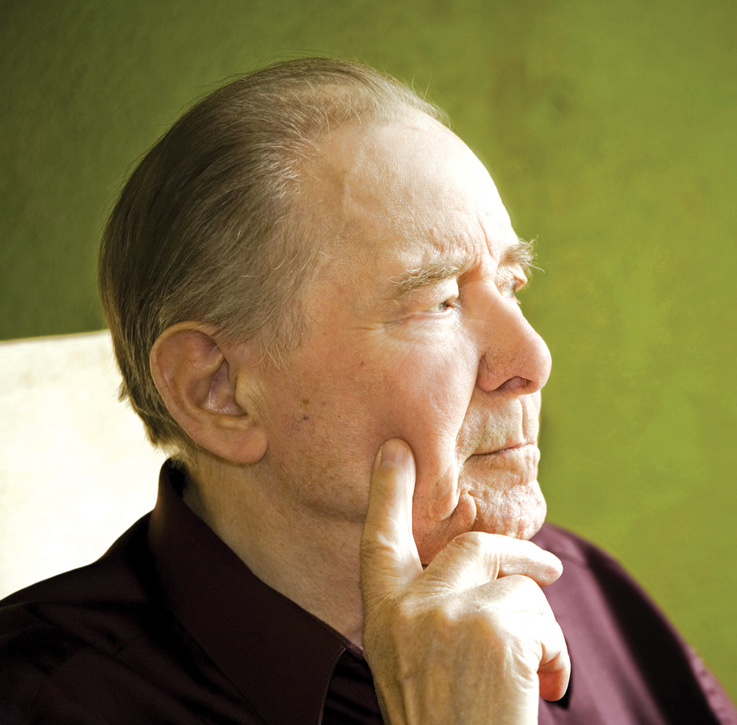A vital service with clear economic, health and social benefits
From a report by the Canadian Society of Palliative Care Physicians
Canada is an aging country. For the first time in history, there are more seniors in Canada than children. By 2024, Canadians aged 65 years and older will account for more than 20 per cent of the population, while children under 15 years old will represent just over 16 per cent of all Canadians.
This translates into higher costs for Canada’s health care system, particularly as Canadian seniors advance to the latter years of life. While aggregate information on health care costs in Canada currently does not exist, policy- and decision makers can extrapolate research from other countries to the Canadian context. U.S. Medicare data shows that a quarter of total health care costs are spent in the last year of life, with about 40 per cent—or 10 per cent of the total Medicare budget—spent in the last four weeks. There is no reason to expect this expenditure would be different in Canada.
Why strategic allocation of resources to palliative care is a must
Strategically allocating resources to palliative care will enable the Canadian health care system to deliver the care patients desire and benefit from, while ensuring effective use of the country’s finite resources. Palliative care has been shown to reduce anxiety and depression, improve quality of life and, in some cases, extend life. As importantly, the provision of palliative care enables more efficient and appropriate use of the country’s health care resources, by reducing the costs of caring for people with life-threatening chronic illnesses and freeing up much needed hospital beds.
In this document, we highlight recently published studies that examine the economics of palliative care and that reaffirm the economic, health and social benefits for providing this vital service to Canadians.
 The cost and benefits of palliative care: Examining the evidence
The cost and benefits of palliative care: Examining the evidence
Can Canada afford a quality palliative care program — one that integrates all the elements deemed essential by the majority of Canadians? The latest studies on palliative care supports a solid case for the effectiveness of palliative care and hospice programs, from both a cost and patient care perspective.
Inpatient and Hospital-based Programs
Compared to usual acute care, hospital-based palliative care could save the health care system approximately $7,000 to $8,000 per patient. Many palliative care units in hospitals
also provide consultative support for patients under the care
of other services, requiring these two components to be considered together.
These savings are achieved through various ways, including:
• Reducing the overall length of hospital stay
• Moving patients from hospital to home or to hospice facilities, at a lower cost per day than acute care
• Reducing the number of ICU admissions
• Reducing unnecessary diagnostic testing
• Reducing inappropriate disease-targeting interventions
Cost-Effectiveness of Palliative Care: A Review of the Literature was the product of a multi-year, federally funded national project called The Way Forward. The review summarized the cost-effectiveness evidence up to 2012. Since then, a large prospective study from New York (2015) demonstrated a 24 per cent reduction in hospitalization costs when patients with advanced cancer diagnoses were seen by a palliative care specialist within two days of admission. The study authors concluded that “Earlier palliative care consultation during hospital admission is associated with lower cost of hospital stay for patients admitted with an advanced cancer diagnosis.”
An even more dramatic reduction in costs was seen following implementation of palliative care services in seven hospitals
in the same U.S. healthcare network. Admission costs were reduced by 40 per cent when palliative care consultation was received within 48 hours of admission. Readmissions were reduced by 61.5 per cent at 30 days, 47 per cent at 60 days, and 42 per cent at 90 days. The study found cost avoidance to be 1.5 times the cost of the palliative care services provided.
In another study, researchers from the Johns Hopkins Health System in Baltimore looked at the financial impact of their six-bed palliative care unit in 2015. They then projected what the impact would be if they increased the unit to 11 beds and expanded their in-hospital palliative care consultation service. The overall cost savings were projected to be more than US $19 million over the next five years, with nearly two-thirds of the savings coming from the consultation service, where patients could be reached early in the course of illness.
Outpatient-based Programs
A number of good quality randomized controlled trials have shown outpatient palliative care services to:
• Improve patient satisfaction with care,
• Improve symptom control and quality of life,
• Reduce health care utilization, and
• Lengthen survival (in those populations in which this was assessed)
The savings in direct health care system costs are consistently reported to be around 30 per cent.
The optimal “price point” in timing of palliative care consultation remains to be determined, as are ways of integrating palliative care into care while disease-modifying treatments and extended survival are still possible. In general, it appears consultation needs to happen within at least three months before a person dies to make a positive impact on health care costs in oncology patients. However, the non-financial benefits of access to even “late” outpatient palliative care are still worthwhile, even if costs are not reduced.
Home-based programs
Home-based palliative care keeps patients out of hospital and allows people to die at home. It is cost-effective and reduces the use of other, more expensive health services. A 2013 study in Ontario projected that expanding in-home palliative team care to those currently not receiving such services (approximately 45,000 people per year, at an annual cost of $76 million to $108 million) can improve quality of life, reduce the use of acute care resources, and avoid $191 million to $385 million in health care costs. Shifting just 10 per cent of patients at end of life from acute care to home care would save $9 million a year.
It should be noted that although costs of home hospice care are less for the health care system than for acute care, a significant part of the health care system’s cost avoidance is transferred to the family through loss of income, purchase of supplies, and other expenditures or missed financial opportunities. The number of people who are eligible for, but do not access, the federal Employment Insurance (EI) compassionate care benefits is unknown. These costs are rarely included in cost-benefit analyses.
Residential hospices
Residential hospice is another type of palliative care with clear economic benefits. For patients who are unable to return home for care, shifting patients’ care from an acute care setting (approximately $1000/day) to a residential hospice (approximately $400/day) is one of the key mechanisms reported to reduce direct costs of care.
Adding up the benefits: Cost reductions, appropriate use of resources and better patient care
Each of the different kinds of palliative care and hospice programs discussed in this document brings opportunities to:
• Reduce the cost of delivering care
• Free up scarce resources in acute care, such as beds in Intensive Care Units (ICUs), for patients who truly need them.
• Improve the quality of life and quality of care of patients with serious illnesses and their families.
The ideal approach to improving palliative care in Canada should include a mix of all these programs.
Where do we go from here?
The Canadian Society of Palliative Care Physicians has developed recommendations for the federal, provincial and territorial governments on how to improve, monitor and evaluate quality and access to palliative care services across Canada. These recommendations are outlined in a November 2016 report: How to Improve Palliative Care in Canada: Call to Action for Federal, Provincial, Territorial, Regional and Local Decision Makers. The “Palliative Care Matters” national consensus report (December 2016) outlines similar recommendations.
References available upon request.
Source: cspcp.ca














